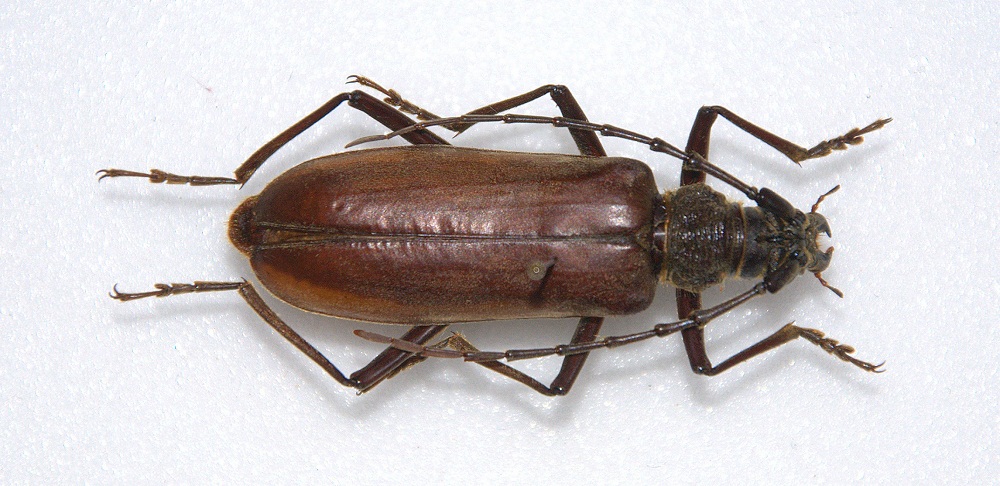| T O P I C R E V I E W |
| Pierre |
Posted - 27/05/2010 : 19:55:40

A species with long fine tarsi, measuring 44 mm.
From Nepal, Mt.Everest area, 3100 m.
It came with the mention "Mastus spec.". But the only Mastus I know are some seashells... |
| 6 L A T E S T R E P L I E S (Newest First) |
| Francesco |
Posted - 25/10/2011 : 19:21:15

This is the criterion Hüdepohl established in this paper.
Previously, the authors (e.g. Gressitt) considered the length of the antennomere III, much longer (Massicus) or scarcely longer (Neocerambyx) than IV.
It seems to me that Hüdepohl's criterion is more correct; however, he forgave some species... if you agree, we can write a short note. |
| Pierre |
Posted - 25/10/2011 : 13:06:46
I did not know that the form of the procoxae does separate these two genera.
In this case I agree with you, no doubt about this point.
Thank you! |
| Francesco |
Posted - 25/10/2011 : 12:51:14
Exactly: it is the same species I also have.
Nonetheless, I think it belongs to Neocerambyx: if you check, the procoxae are externally angulated, not rounded. |
| Pierre |
Posted - 25/10/2011 : 12:40:11

This is an interesting direction. "Mastus spec." could be a misspelling of Massicus, indeed.
I recently have received another pair of this species (thanks to Carlo's expedition), I show it here in order to point out the particular structure of the male's antennae, especially the third part. |
| Francesco |
Posted - 24/10/2011 : 22:57:58
I have found a catalogue of Nepal insects, where the only possible quoted species is Massicus dierli Heyrovskı, 1976.
I will look for its description.... |
| Francesco |
Posted - 01/06/2010 : 21:39:44
I have the same species and I think it belongs to the genus Neocerambyx, even if I do not know the species. |


